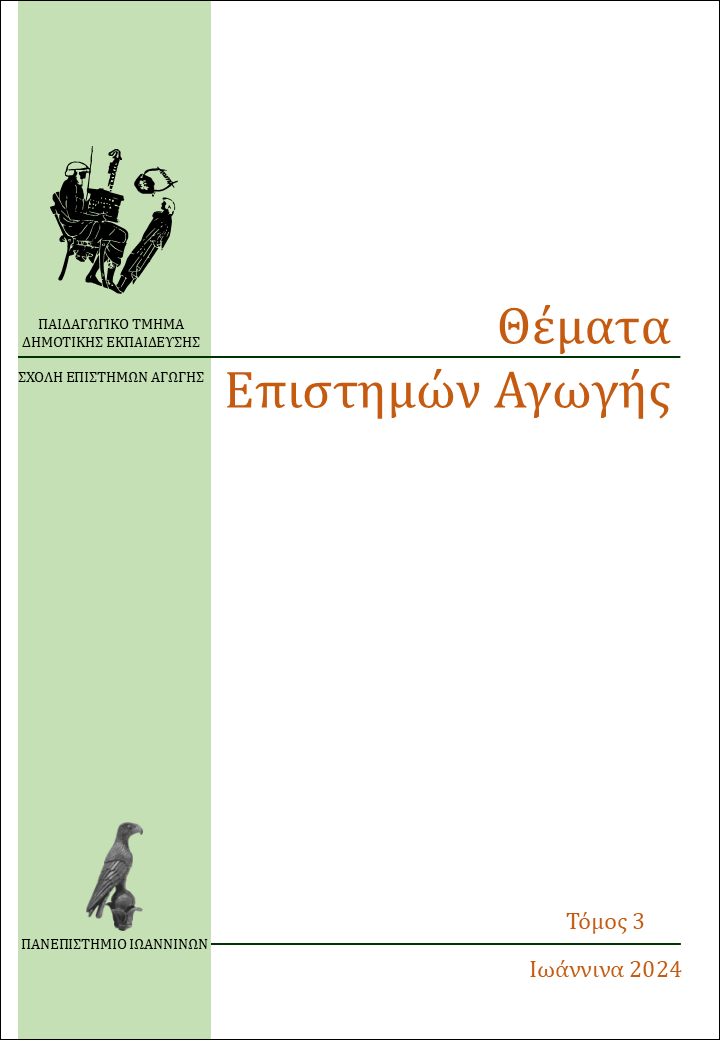Επίδραση της ηλικίας και του φύλου στις γραφοκινητικές και πρωτοαναγνωστικές δεξιότητες στο Νηπιαγωγείο και η μεταξύ τους σχέση

Περίληψη
Η γραφή και η ανάγνωση αποτελούν προαπαιτούμενες δεξιότητες για τον εγγραμματισμό των παιδιών. Για τον λόγο αυτό, παρατηρείται έντονο ερευνητικό ενδιαφέρον όσον αφορά την ανάπτυξη αλλά και την μεταξύ τους σχέση κατά την προσχολική ηλικία καθώς ο εντοπισμός κάποιων ελλειμμάτων μπορεί να οδηγήσει στον έγκαιρο εντοπισμό πιθανών αναγνωστικών δυσκολιών. Στην έρευνα συμμετείχαν 39 νήπια τυπικά αναπτυσσόμενα, τα οποία δεν είχαν διαγνωστεί ως παιδιά με ειδικές εκπαιδευτικές ανάγκες ή/και αναπηρία. Για την συλλογή των δεδομένων τους χορηγήθηκαν ατομικά δυο εργαλεία: η Κλίμακα Αξιολόγησης Γραφοκινητικών Δεξιοτήτων (ΚΑΓΔ) και οι δοκιμασίες φωνολογικής επίγνωσης και βραχύχρονης μνήμης φωνολογικών πληροφοριών από το εργαλείο ανίχνευσης και διερεύνησης αναγνωστικών δυσκολιών στο Νηπιαγωγείο και την Α΄- Β΄ Δημοτικού. Από την ανάλυση των δεδομένων προέκυψε στατιστικά σημαντική συσχέτιση μεταξύ γραφοκινητικών και πρωτοαναγνωστικών δεξιοτήτων. Επιπλέον, μεταξύ μεγαλύτερων ηλικιακά και μικρότερων παιδιών εμφανίστηκαν σημαντικές διαφορές τόσο στις γραφοκινητικές όσο και στις πρωτοαναγνωστικές δοκιμασίες. Τα ευρήματα αυτά θα μπορούσαν να προσφέρουν στους εκπαιδευτικούς δεδομένα για την ενίσχυση σχετικών δεξιοτήτων στην προσχολική ηλικία.
Λεπτομέρειες άρθρου
- Πώς να δημιουργήσετε Αναφορές
-
Κραγιοπούλου Ι., Λουάρη Μ., Μπονώτη Φ., & Βλάχος Φ. (2024). Επίδραση της ηλικίας και του φύλου στις γραφοκινητικές και πρωτοαναγνωστικές δεξιότητες στο Νηπιαγωγείο και η μεταξύ τους σχέση. Θέματα Επιστημών Αγωγής, 3(1), 28–42. https://doi.org/10.12681/thea.37598
- Τεύχος
- Τόμ. 3 Αρ. 1 (2024)
- Ενότητα
- Επιστημονική Αρθρογραφία


